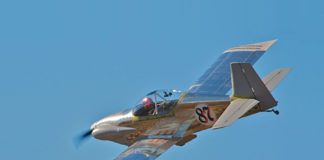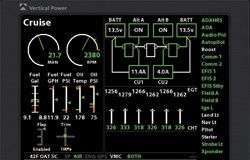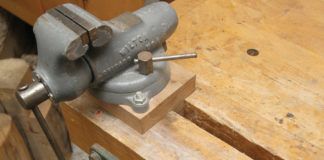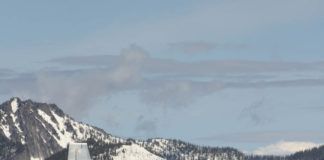History’s first aircraft were, for the most part, designed and built by individuals or a small group of experimenters. They were what we think of today as homebuilts, which distinguishes them from mass-produced, FAA-certified, factory-built aircraft.
WW-I moved airplane manufacturing out of garages and into factories, and the quest for speed and for commercial and military use of airplanes overshadowed the individual sport airplane builder. But there were a few individual builders including Ed Heath, who is credited with one of the first airplanes in kit form. Dating from the 1920s, his Heath Parasol is still remembered. And in the ’30s, Bernie Pietenpol’s Air Camper two-seater, powered by a Model A Ford engine, spurred hundreds to buy plans and build their own Air Campers. Pietenpol Air Campers are still being built, and scores of them are flying.
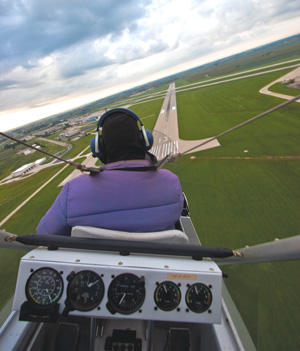
By the late ’30s, the U.S. government had decided that homebuilding was not an appropriate activity. The gathering storms of war may have influenced that decision. But by 1947, Congress officially approved the licensing of homebuilt aircraft, subject to a federally regulated inspection program.
The official justification for permitting homebuilt aircraft was and still is education and recreation. Official government sanction of the hobby was followed in 1953 by the founding of the Experimental Aircraft Association (EAA) by Paul Poberezny, Ray Stits and others. Craftsmen’s magazines published cover stories about inexpensive aircraft you could build in your garage. Thousands of plans were sold, and hundreds of aircraft were built.
A few kits were introduced, but Frank Christensen achieved a breakthrough with his Christen Eagle II biplane kit in the 1970s. This two-seat aerobatic plane came with a new engine, an 8-foot stack of manuals, and many beautifully finished parts. Too many, according to the FAA, which made Christensen stop supplying a complete set of finished wing ribs so that the builder could do more of the work.
Jim Bede’s BD-5 kit program (early to mid 1970s) failed to deliver necessary ingredients like engines and driveshafts, but the 3000+ customers who had paid for their BD-5 kits demonstrated the potential for an industry to service homebuilders.
Burt Rutan’s plans-built VariEze amazed the aviation world in 1975 and was soon followed by the larger Long-EZ, which set many world records. Hundreds of them were built and are still flying.
By the early 1980s, homegrown aviation–whether in the form of hang gliding, powered ultralights, or FAA-licensed homebuilt aircraft–had taken off. And in the summer of 1984, the first issue of KITPLANES® (“For Designers, Builders and Pilots of Experimental Aircraft”) was published. We’ve not been the same since.
What Is a Homebuilt?
In the United States, anyone can build an airplane or a helicopter or a glider or any number of other aircraft. To get it licensed to fly, it needs to meet certain criteria. And to fly an aircraft registered in the Experimental category, the pilot needs a private license or a periodic signoff by a flight instructor.
The most useful licensing category for the build-it-yourself pilot is Experimental, Amateur-Built. Before the aircraft is finished, the builder applies to the FAA for a registration number and registration. The completed aircraft is inspected by the FAA (for free) or by an FAA-designated inspector (for a fee). The aircraft is assigned a test area and a minimum number of test hours to fly and a temporary certificate of airworthiness.
For more details on Experimental/Amateur-Built aircraft certification see Federal Aviation Administration (FAA) Advisory Circular 20-27, “Certification and Operation of Amateur-Built Aircraft.”
At the end of a satisfactory test period, a permanent airworthiness certificate is given by the FAA, and the builder will also receive a document called a repairman certificate upon request. The repairman certificate allows the builder to perform annual inspections on that aircraft, rather than having to pay an FAA-certified mechanic like factory-built aircraft owners do. (To read more about the repairman’s certificate, see FAA AC 65-23.)
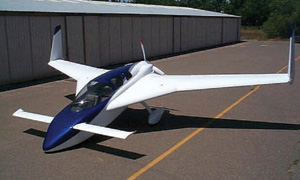
With the permanent airworthiness certificate, the plane is operated much like a certified, factory-built aircraft. Passengers may be carried, and the aircraft can be flown at night and in instrument flight if it is equipped properly. The exception is that it may not be used in commercial service; it can’t be used to fly people or packages for hire, but it could be used to fly on business trips or for such activities as inspecting the owner’s property.
Trends in the Marketplace
We have prepared a graph illustrating the number of kits and plans projects sold over the years as reported by kit manufacturers. Click here for the graph.
Getting Help
Many people who are attracted to the style, speed and comfort of high-end homebuilt aircraft lack the time to build, which usually takes years. The regulation allows any number of people to participate in the building of an Experimental, Amateur-Built aircraft–as long as they are not paid. The rule is that the major portion must be amateur-built.
Known as the 51% rule, the regulation precludes hiring out most of the work on an aircraft in this category. The FAA keeps a list of eligible amateur-built aircraft kits.
Recently, the FAA has interpreted the amateur-built rule to allow certain professional help that does not count against the major-portion requirement. FAA Advisory Circular 20-139 “Commercial Assistance During Construction of Amateur-Built Aircraft” outlines the legalities of getting help with a project, but in general, you can pay for professional paint, upholstery, engine buildup or overhaul and aviation electronics and instruments beyond the basic level without jeopardizing the amateur-built status.
We recommend checking out your local EAA chapter. Many chapters have active aircraft builders who would be happy to show their projects–completed or not–and maybe even offer a chance at hands-on building experience. (“Where’s the whitewash bucket, Tom Sawyer?”)
Numerous books on homebuilding–including some by regular writers for KITPLANES magazine–are available from aviation book sources.
And KITPLANES®, our magazine, is considered a must by many thousands of prospective and active builders. The magazine carries a wide range of article topics including flight reviews, how-to features, product reports, detailed what-it’s-like-to-build-one serialized articles, aviation electronics (avionics) news and updates, surveys of builders and first-person reports from builder/pilots who are flying their homebuilts… plus annual directories of kit- and plansbuilt aircraft, building supplies and services, and avionics. There’s even a regular dose of aviation humor supplied by cartoonist Robrucha.
To subscribe, see the Subscription information page.
Test-Flying Homebuilts
With a private or higher grade pilot’s license, you may test your own completed homebuilt. But many builders who put prudence above pride seriously consider letting someone more qualified make the first flight or two. The builder has often let flying proficiency slide while concentrating on the building process, and another pilot may have much more experience in this type of aircraft.
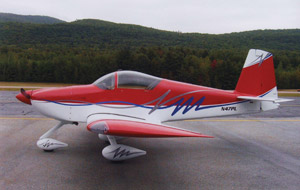
Generally, only one person is allowed aboard the homebuilt during its test period, which is usually 40 flight hours, unless a certified engine/propeller combination is installed. In that case, 25 hours of flight-testing is often assigned by the inspector.
FAA Advisory Circular AC 90-89 is the 100-page “Amateur-Built Aircraft and Ultralight Flight Testing Handbook”–a valuable information source.
Other Options
Ultralights require neither aircraft nor pilot licenses in the United States and may be a viable option for those interested only in local sport flying without passengers. Some licensed pilots choose to avoid the trouble and expense of maintaining a current FAA medical certificate by flying ultralights, which can be built from kits or bought ready to fly. As with licensed aircraft, ultralight training is mandatory for safety, even for highly qualified, licensed pilots.
The range of sport aircraft now includes new types that were largely unknown 15 years ago. The field includes single-seat, kit-built helicopters and gyroplanes, high-performance trike-style (powered hang glider) ultralights, powered parachutes (both foot-launched and with wheels), amphibious airplanes, and even a few powered and unpowered gliders that can be built at home.

